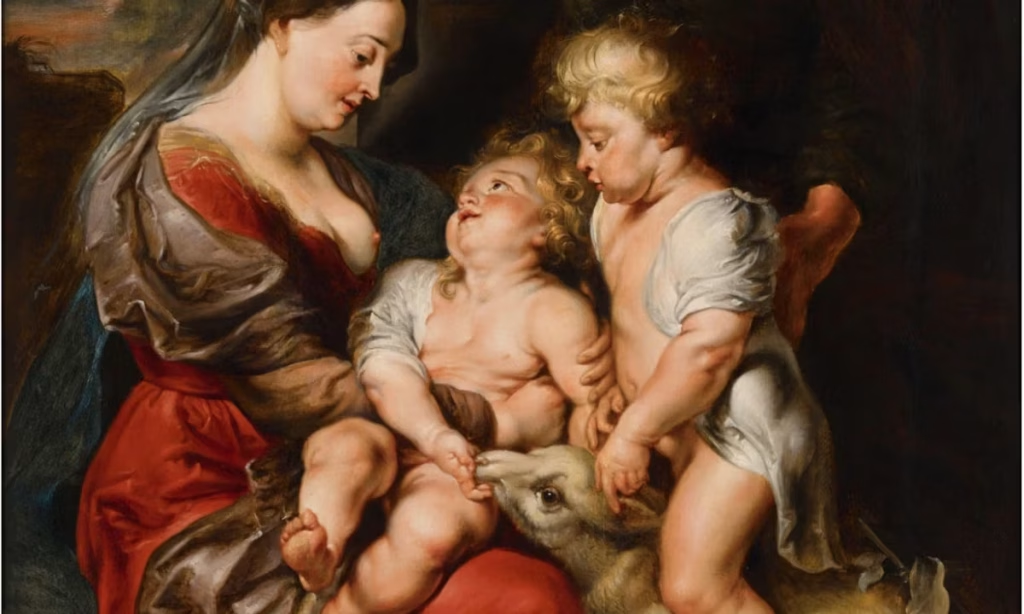Thirty years ago, Larry Gagosian mounted an exhibition of oil paintings and sketches by Peter Paul Rubens in his New York gallery—an unprecedented move for a commercial contemporary art enterprise. Back then, the mega dealer saw parallels between the Baroque artist and Robert Rauschenberg as well as Andy Warhol, whose portraits of movie icons from the 1960s reminded Gagosian of Rubens’s royal court paintings.
At Art Basel in Paris this week, Gagosian is revisiting his love for Rubens, exhibiting The Virgin and Christ Child, with Saints Elizabeth and John the Baptist (around 1611-14) alongside works by John Currin, Jadé Fadojutimi, Alberto Giacometti, Pablo Picasso and Auguste Rodin on his booth. “I have great affinity for Old Masters and Rubens in particular,” Gagosian says.
“Over the past decade or so, I have noticed a renewed interest in the period, particularly when I think of artists like John Currin, Jenny Saville, Anna Weyant and Glenn Brown, where there is clearly an inspiration.”
The gallery declined to give the price on the Rubens, which is a relatively recently rediscovered depiction of the holy family—but the painting was traded publicly in 2020, selling at Sotheby’s in New York for $7.1m. A comparable example is held in the Thyssen-Bornemisza Collection in Madrid.
Art Basel has granted Gagosian special permission to show the work, painted hundreds of years before the fair’s usual 1900 cut-off point. It is understood the exception was agreed on the grounds that the Rubens be presented in a clear dialogue with Modern and contemporary artists.
As the director of Gagosian’s Paris gallery Serena Cattaneo Adorno puts it: “When such juxtapositions are made, there must be a real curatorial purpose—it’s not about mixing the old with the new or contemporary for purely speculative reasons. We aim to convey a cultural message. Art Basel Paris allows for this kind of presentation because collectors coming to Paris are extremely knowledgeable.” The Louvre museum holds the largest collection of works by Rubens outside of Belgium.
Among the works hung alongside the Rubens on Gagosian’s stand are Currin’s new canvas Supermoon (2025), a provocative take on the Three Graces from Greek mythology; Rodin’s bronze Le Baiser (The Kiss) (around 1905-10), a version of his erotically charged marble sculpture of an embracing nude couple; and Picasso’s Nu accoudé (Nude Leaning) (1961), in which the artist deconstructs the female body, recasting it in light of his fascination with African masks.
